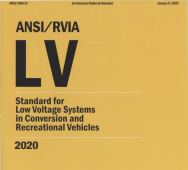Merlin are you in the USA or some other country?
I am not smart enough to know if we are or are not leading Merlin in the direction of a "GROUND LOOP".
I have a similar issue with my own build and hope to see the perfect solution reached in this thread.
What voltage, AC or DC, is traveling 100 feet to the house? I found this in another thread and I believe you are running 196 volts DC:
"I am fine because I need to go just 80 ft with 4S - 3P, 196V, 34 Amp and have just a lost of 1.55%"
Merlin says there are "ground spikes out of metal" near the panels BUT the house is not grounded.
I am assuming there are 2 wires, PV +/-, between the array and the house.
Would adding a ground rod or connection to ground (which I don't believe exists at this time) 100 feet away, at the house,
create a "GROUND LOOP"?
I am assuming the charge controller, inverters and AC distribution panel are in the house.






